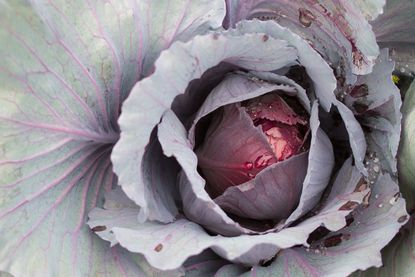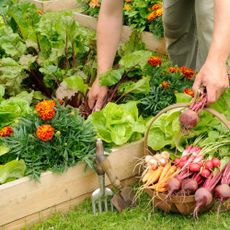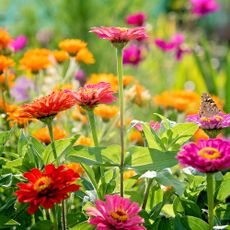Ruby Perfection Variety – How To Grow Ruby Perfection Red Cabbage


Did you know the color red stimulates the appetite? Adding red cabbage to coleslaw or salad makes those dishes more appealing. Some colorful dishes, like braised red cabbage with apples, are considered a traditional holiday side dish. Additionally, red cabbage contains anthocyanins and phenolics which benefit your memory, immune system, and urinary tract.
For gardeners, growing Ruby Perfection cabbage is the perfect opportunity to not only add color to the dinner table but also increase the variety of vegetables growing in the garden. When selecting a red cabbage to grow, the Ruby Perfection variety is the one of choice!
What is Ruby Perfection Red Cabbage?
Ruby Perfection red cabbage is a mid to late season, medium-sized variety of hybrid cabbage. Ruby Perfection plants produce firm 4- to 6-pound (2 to 2.5 kg.) heads in a rich, deep red color. They have good storage potential and can often last well into late winter or early spring when stored in a root cellar. Ruby Perfection matures 80 days after transplanting.
In addition to being a colorful highlight for the dinner table, red cabbage has an oddly unconventional use for the home gardener. The anthocyanins in red cabbage act as a pH indicator. Gardeners can use Ruby Perfection red cabbage to test the pH level of their garden soil or to perform a home-based STEM experiment with the kids. The indicator colors range from reddish-pink for acidic solutions to greenish-yellow for basic ones.
Ruby Perfection cabbage seeds can also be grown as microgreens. The Ruby Perfection variety adds a touch of color and light cabbage flavor to these trendy vegetable mixes. Microgreens are considered more nutrient-rich than mature vegetables. Growing Ruby Perfection as microgreens has an added nutritional benefit since red cabbage contains higher levels of vitamin C than green varieties.
Growing Ruby Perfection Cabbage
Start Ruby Perfection cabbage seeds indoors 4 to 6 weeks before the last frost. Germination takes 7 to 12 days. The seedlings can be transplanted to the garden before the final frost of the spring season. Space plants 2 to 3 feet (0.5 to 1 m.) apart in a sunny location.
Cabbage is a heavy feeder. Plant in an organic-rich soil or supplement with a high nitrogen fertilizer. Taper off feeding cabbage as they near maturity to prolong the harvest period and prevent the heads from splitting.
Gardening tips, videos, info and more delivered right to your inbox!
Sign up for the Gardening Know How newsletter today and receive a free download of our most popular eBook "How to Grow Delicious Tomatoes."
Begin harvesting Ruby Perfection when the heads are firm to the touch. The Ruby Perfection variety resists splitting better than most, so the heads can remain in the field up until a heavy freeze. Exposure to cold and frost increases the sugar content of cabbage.
Growing Ruby Perfection is fairly easy. This variety has a natural resistance to thrips and black rot. It's recommended to rotate crops from the Brassicaceae family, so resist planting cabbage where kale, broccoli, or cauliflower was grown the previous year.

Laura Miller has been gardening all her life. Holding a degree in Biology, Nutrition, and Agriculture, Laura's area of expertise is vegetables, herbs, and all things edible. She lives in Ohio.
-
 5 Fast-Growing Intercrops To Max Out Your Vegetable Garden
5 Fast-Growing Intercrops To Max Out Your Vegetable GardenEven the smallest gardens can have mighty growing potential. These delicious intercrops are quick and easy to grow and will make your veg plot more productive.
By Amy Grant
-
 9 Annual Flowers That Bloom All Summer Long
9 Annual Flowers That Bloom All Summer LongThis curated pick of show-stopping annuals will fill out your garden beds, containers, and hanging baskets until the end of summer.
By Amy Grant